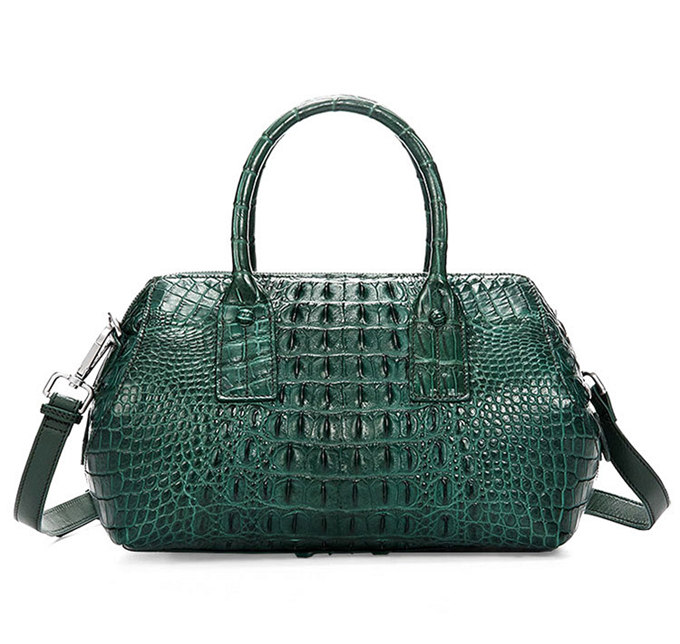Crocodile handbags have long fascinated fashion enthusiasts around the world with their exquisite design and undeniable charm. These luxurious accessories, made from the hide of crocodiles, have a rich history that spans centuries. In this article, we will explore the mesmerizing world of crocodile handbags, from their origins to the manufacturing process, and delve into the environmental concerns associated with this luxury item.
Crocodile handbags trace their roots back to ancient civilizations where they were revered as symbols of power and wealth. In Egypt, crocodile skins were highly sought after and were used to create ornate accessories for royalty. The use of crocodile leather in fashion continued throughout history, with notable mentions in the fashion eras of the 1920s and 1950s. Today, crocodile handbags have become an integral part of high-end fashion, bringing a touch of elegance to any outfit.
Creating a crocodile handbag is a meticulous process that requires skilled craftsmanship. The raw material for these handbags comes from the skins of farmed or hunted crocodiles. The leather extraction process is done with precision to ensure the highest quality product. After the crocodile skins are harvested, they undergo a lengthy tanning process to soften the leather and preserve its durability. This process involves the use of specialized chemicals and techniques that have been perfected over time.

Once the crocodile leather is ready, it is up to the skilled artisans to transform it into a coveted accessory. Each handbag is carefully crafted, paying attention to every minute detail. From cutting the leather to stitching it together, every step is executed with precision. The craftsmen skillfully shape the leather to create the desired purse design, ensuring that each bag is unique. The final touch is the addition of clasps, handles, and other hardware to complete the handbag's allure.
While crocodile handbags are a symbol of luxury and style, their production raises ethical and environmental concerns. The demand for crocodile leather has led to the growth of crocodile farming, with many entrepreneurs taking advantage of this lucrative trade. However, croc bag living conditions in some crocodile farms have come under scrutiny, with reports of animal cruelty and inadequate facilities. Additionally, hunting crocodiles in the wild can negatively impact their populations and disrupt ecosystems.
To address these concerns, various organizations and fashion houses have implemented strict regulations on the sourcing and production of crocodile leather. Many reputable brands now work closely with certified farms that prioritize animal welfare and abide by sustainable farming practices. They also ensure transparency in their supply chains, allowing consumers to make informed choices.

In recent years, alternatives to crocodile leather have emerged in response to the ethical concerns surrounding its production. Sustainable materials like plant-based leather, such as pineapple or apple leather, provide a cruelty-free and eco-friendly option for fashion lovers. These innovative materials mimic the texture and durability of reptile leather, offering a guilt-free alternative to the classic crocodile handbag.
In conclusion, crocodile handbags have a long and storied history that continues to captivate fashion enthusiasts. This luxury accessory, once reserved for royalty, now represents opulence and style. While the production of crocodile handbags raises ethical and environmental concerns, steps are being taken by responsible brands to mitigate these issues. The emergence of sustainable and cruelty-free alternatives further underscores the importance of conscious choices in the world of fashion. So the next time you spot a crocodile handbag, you will appreciate not only its beauty but also the complex story behind it.
